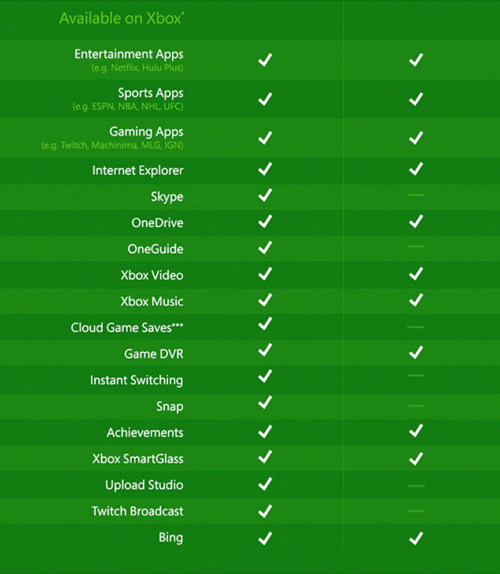In an about-face to some of its least popular Xbox One policies, Microsoft has proven it’s still listening to its customers—and willing to give gamers what they want.
Starting June 9, the company will sell a standalone, Kinect-free version of its Xbox One console for $399. With news of the Kinect unbundling, Microsoft also announced an even more substantial change of heart: that it would unshackle Netflix, Hulu and other streaming entertainment apps from its pricey $60 annual (more paid month-to-month) Xbox Live Gold membership.
The Kinect, Microsoft’s 3D motion camera that executes voice and gesture commands, was largely to blame for the substantial price gap (and unit sales) between Microsoft’s Xbox One and Sony’s PlayStation 4, which sells for $399. The shift is tied to both a change in strategy and a shift of leadership following last year’s departure of former Xbox chief Don Mattrick to Zynga, and the later loss of Xbox lead Marc Whitten to Sonos. Happily, it appears that Phil Spencer, longtime Microsoft employee and new head of Xbox, isn’t afraid to admit mistakes and shift gears when they need shifting.
Netflix, Hulu Free At Last

While an Xbox Live Gold premium account is still necessary to unlock online multiplayer gameplay and other online gaming features, a whole slew of other Xbox Live apps will be soon made free to all users, including ESPN, NBA, NHL, UFC, Twitch, Machinima and more. The maneuver might reframe the original video content Microsoft has been planning for the Xbox One, including a documentary about that crazy Atari legend we followed into the desert and at least six original TV shows.
Suddenly the Xbox One doesn’t look so unfriendly to the casual living room crowd, which the Xbox One initially seemed to court. Since then, major shifts in policy have come as direct reactions to public outcry among the core gaming set, including controversial DRM, always-on and regional restrictions.
It’s easy to look at the pricing news and think Microsoft’s Xbox One isn’t selling. That is indeed the case, but it’s a signal of something bigger.
It’s worth noting the news of a $399 Xbox One isn’t a price drop for the console itself—it just shaves off a pricey, required peripheral that no one really wanted, and it gives would-be Xbox One buyers a choice they should’ve had in the the first place. An unbundled Kinect sensor will be available this fall, and odds are that it will be improved over the one that’s currently shipping.
From the Xbox Wire blog:
“Since the beginning, we have focused on delivering great games and entertainment experiences for you. Your feedback matters to us and it shapes the products and services we build. Your feedback showed up in the Xbox One console we launched back in November and in the monthly updates we’ve delivered since.
We’ve heard that you want more choices from Xbox One. You want a wide variety of options in your games and entertainment experiences and you also want options in your hardware selection.”
The Long Game
For Microsoft, it’s wise to provide those purchasing options ASAP. The Xbox’s uniquely draconian Netflix policy has lived on way too long already and the company needs to lure in video consumers before it starts delivering all of those expensive original shows.
Looking over the fence, Sony has managed to sell 7 million units of its Xbox One rival, the PlayStation 4, as of early April 2014. Microsoft sold almost 4 million Xbox One by the end of January 2014, but the company has remained mum on numbers since then. For tech companies, no news isn’t good news—it’s a sign of unimpressive news or altogether bad numbers.
Still, it’s way, way too early to call it. The PlayStation 4 was the darling out of the gate, but Microsoft has shown a remarkably humble willingness to comply with the demands of outspoken gamers, and that strategy is well suited to the slow-and-steady pace of the so-called console wars.










